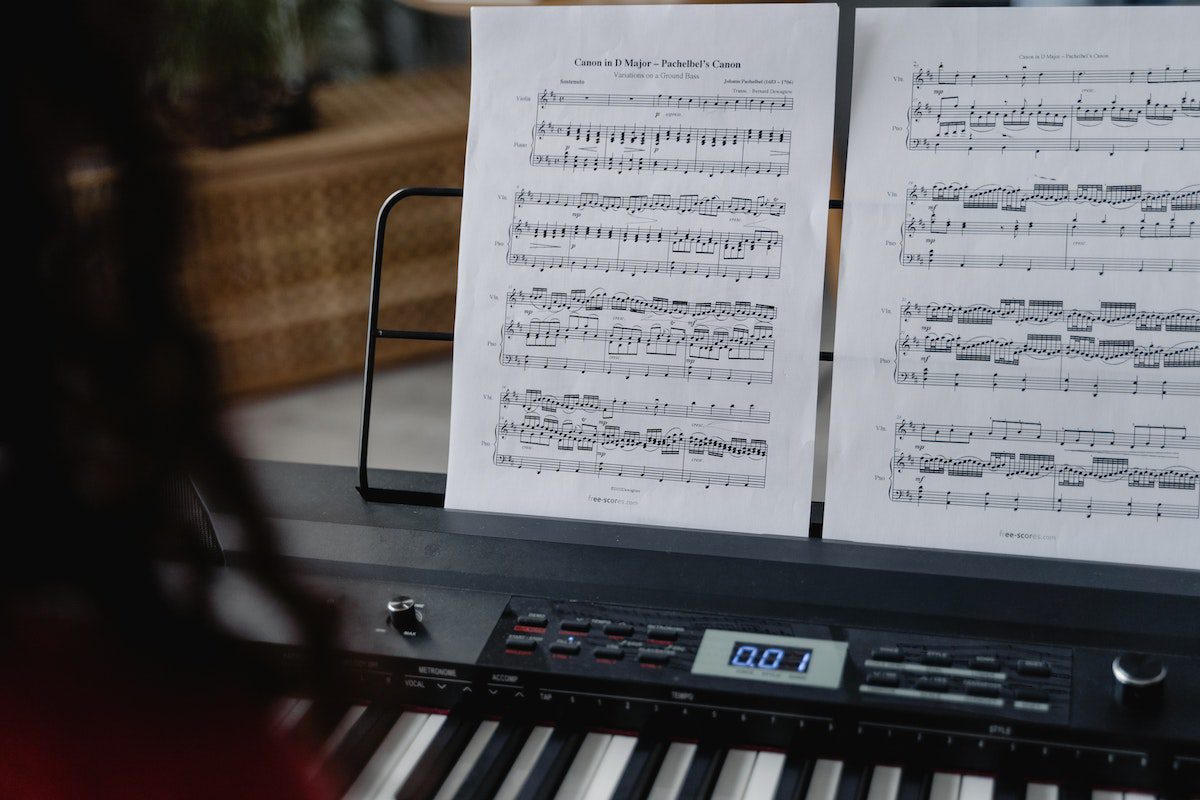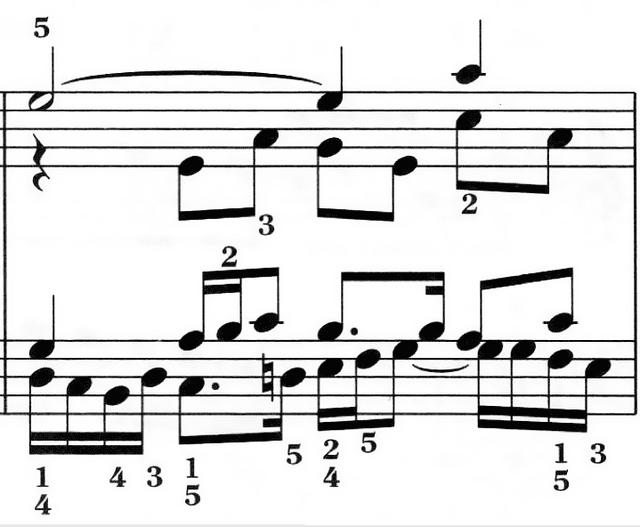Have you ever found yourself lost in the lush soundscapes of a symphony, where multiple melodies dance together like an intricate ballet of sounds? That, my friend, is like being at the heart of a polyphonic party, where each melody line is a unique partygoer, grooving to their rhythm but still vibing in perfect harmony with the crowd. By the end of it, you’ll understand what polyphony truly means and appreciate the enchanting beauty it brings to the world of music.
What is polyphony in music? Polyphony is the layering of several independent melodies, each contributing to a richer and more complex musical piece. It’s like a symphony of distinct voices, each singing its tune yet harmonizing.
What is polyphony in music, and why is it important?
Let’s get straight into it. Polyphony in music is like the ultimate jam session of melodies. It’s when you’ve got multiple independent melodies working together, each doing its own thing yet weaving together to create a dense, rich tapestry of sound. It’s not just the lead guitar wailing away while everyone else backs them up. No, in polyphony, everyone’s the star of their show, yet still part of the bigger picture.

Think about the legendary “Bohemian Rhapsody” by Queen. That tune is a stellar example of polyphony. You’ve got the piano melody, the guitar, the bass, the vocals – they’re all doing something different, yet it all fits together to create a track that’s nothing short of a masterpiece.
…piano melody, the guitar, the bass, the vocals – they’re all doing something different,
yet it all fits together to create a track that’s nothing short of a masterpiece.
I remember the first time I encountered polyphony as a budding music producer. I was fiddling around with a simple melody on my keyboard, so I decided to add a bass line that was different from the main melody. I was a bit hesitant at first. I mean, wouldn’t they clash?
But to my surprise, they complemented each other, creating a new layer of depth I hadn’t anticipated. It was like discovering a new color to paint with. And that, my friend, was my introduction to the magic of polyphony. So why should you care about polyphony? Because it’s a game-changer, my friend. It allows you to add depth, texture, and complexity to your music.
AKAI Professional MPK Mini MK3

AKAI Professional MPK Mini MK3
How does polyphony differ from monophony and homophony?
Understanding the difference is like knowing your beats from your bars in the music world. Let’s take this polyphony thing under the microscope compared to monophony and homophony.
Monophony is the lone wolf of music. It’s when you have a single melody with no harmonies or accompaniment. Think of a solo singer belting out a ballad. The star of the show is that single melody line. It’s all eyes, or rather, all ears on them.
Homophony, however, is like a lead singer with a dedicated group of backup singers. You have one main melody, and the rest of the tunes harmonize. It’s all about supporting the star of the show. A great example of homophony is the pop music we all love to groove to. The melody takes the spotlight, and the chords follow its lead.
As we already know, polyphony is when you have multiple independent melodies. It’s like having a band where each member is a leader. Each melody is a thread; when they intertwine, you get this intricate, layered sound. It’s like the grand tapestries in a cathedral but for your ears.
| Musical Texture | Definition | Example |
|---|---|---|
| Monophony | Consists of a single melodic line without any accompanying harmonies or chords. It is the simplest form of musical texture. | A solo singer performing a melody without any instrumental accompaniment |
| Polyphony | Involves two or more simultaneous and independent melodic lines that intertwine to create a harmonious whole. Each melodic line is distinct and can stand alone. | Examples can be found in the works of J.S. Bach, where multiple voices coexist and interact to create intricate musical tapestries |
| Homophony | Features a main melodic line accompanied by additional supporting musical lines, which can be simple chords or elaborate accompaniment patterns. | Features a main melodic line accompanied by additional supporting musical lines, simple chords, or elaborate accompaniment patterns. |
Here’s a quick little ‘dos and don’ts’ table to help you remember:
By understanding these three types of textures in music, you can choose the right one to create the vibe you want in your music. It’s like having a musical palette and knowing which colors to mix to get the perfect shade. Groovy, right?
| Do | Don’t | |
|---|---|---|
| Monophony | Single melody line | Complicate it with harmonies |
| Homophony | Make one melody the star, with harmonies supporting | Let other melodies steal the spotlight |
| Polyphony | Layer multiple independent melodies | Let one melody dominate |
How can polyphony influence your music production?
Polyphony is not just a fancy term music theorists throw around. It’s a key that can unlock a new dimension in your music production. Let’s imagine you’ve got a track. It’s got a catchy main melody, a groovy bass line, and a solid beat. It’s cool, but it’s not quite there yet. You feel like it’s missing that extra “oomph.” This is where polyphony struts onto the stage, my friend.
When you introduce polyphony into your mix, you invite more voices to the party. It’s like taking your track from being a duo or trio to being a full-blown band. Each voice adds unique flavor, making the track richer, more complex, and more engaging.

Take, for example, the Beatles’ “I Want to Hold Your Hand.” In this track, you can hear how John Lennon and Paul McCartney’s vocal lines are different but simultaneously work together, creating a captivating musical conversation. This is polyphony at play, and it’s what makes the track unforgettable.
So, how can polyphony influence your music production? By adding depth, richness, and complexity. Polyphony allows you to create tracks that are more engaging and unforgettable. And let’s face it, in a world where new music is released every minute, having a track that stands out is the dream, right? So, don’t be afraid to play around with polyphony. You might find that it’s the secret ingredient your music has been missing.
Who are some famous artists that utilize polyphony?
Now that we’ve delved into the nitty-gritty of polyphony, let’s look at some of the maestros who’ve mastered this art. Because believe it or not, polyphony is not just for classical composers (although they were pretty darn good at it). Many contemporary artists also love to play around with polyphony in their tracks.
The Beatles: These legends need no introduction. Their songs are a treasure trove of polyphonic wonders. From the infectious hooks of “I Want to Hold Your Hand” to the mesmerizing layers in “A Day in the Life,” The Beatles’ mastery of polyphony set a new standard for musical innovation.
Radiohead: Known for their atmospheric and introspective soundscapes, Radiohead embraces polyphony to create sonic landscapes that envelop the listener. Songs like “Paranoid Android” showcase their ability to intertwine multiple musical voices into a cohesive and emotionally charged experience.
Deadmau5: Moving into electronic music, Deadmau5 stands out for his skillful use of polyphony in crafting intricate and immersive compositions. Tracks like “Strobe” demonstrate his talent blending diverse melodic elements, creating a rich and textured sonic journey.
These artists, among countless others, have harnessed the power of polyphony to push musical boundaries and ignite our imaginations. By embracing polyphony, you can tap into this creative force and paint your own sonic masterpiece. So, let the melodies intertwine, harmonies soar, and the rhythm take flight as you embark on your musical exploration. The world is waiting to hear the symphony you create!
Advantages and disadvantages of polyphony
Every tool in your music production kit has ups and downs, and polyphony is no exception. It’s like a wild, multi-voiced beast – when tamed correctly, it can do wonders for your track. But without careful control, it might just run rampant.
Pros of polyphony
- Creates a richer, more complex sound
- Allows for greater creativity and experimentation
- Enhances the depth and texture of the music
- It makes your music more engaging and memorable
Cons of polyphony
- Can make the mix sound cluttered if not controlled properly
- Might confuse the listener if too many melodies are competing
- Requires a good understanding of harmony to avoid discord
- It can be time-consuming to compose and produce
If you want even more tips and insights, watch this video called “What is Polyphony in Music?” from the LivingPianosVideos YouTube channel.
Frequently asked questions (FAQ)
Do you still have questions about polyphony in music? Below are some of the most commonly asked questions.
Can I use polyphony in any music genre?
Yes, while polyphony is traditionally more prevalent in genres like classical and jazz, there’s no rule that says you can’t bring it into any genre. It’s all about how you use it. So go on, layer those melodies in your punk rock or hip hop track. Break the mold!
Is polyphony only for melodies?
Not at all! Polyphony isn’t just about having multiple melodies. It’s about having multiple independent voices. These voices can be melodic, rhythmic, or even textural. So feel free to get creative with your polyphony.
Does using polyphony make mixing harder?
It can make mixing harder. More voices mean more elements to balance in your mix. But don’t let that deter you. With careful control and a good understanding of your tools, you can create a balanced mix that does your polyphonic composition justice.
Conclusion
We’ve hit the final bar in our musical journey through polyphony. We’ve dived deep into the world of simultaneous melodies and multi-voiced magic, and I hope you’re walking away with a tune or two to play with. Just remember, in the world of music production, polyphony is not a “poly-optional” tool; it’s a “poly-opportunity”!
Now, did I answer all your questions about polyphony? And did I cover everything you wanted to know? Let me know in the comments section below (I read and reply to every comment). If you found this jam session helpful, feel free to share it with a friend and check out my full blog for more tips and tricks on mastering the art of music production. Thanks for reading, and keep those beats banging!
Key Takeaways
This article covered the fascinating world of polyphony in music production. Here are some key takeaways:
- Polyphony refers to the simultaneous occurrence of two or more independent melodic voices within a musical composition.
- Polyphony can add depth, richness, and complexity to your music, making it more engaging.
- Classical, jazz and electronic music genres often feature high levels of polyphony.
- Polyphony can be challenging to compose and produce, and if not controlled properly, it can lead to a cluttered mix.
- Many famous artists, including The Beatles, Radiohead, and Deadmau5, have utilized polyphony in their music.















